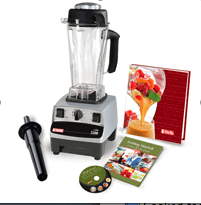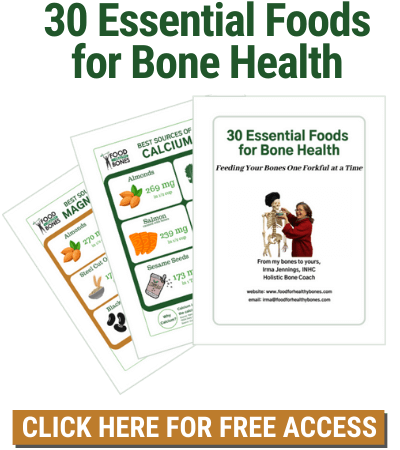Remember all leafy greens are a good source of Vitamin A (immunity), Vitamin C (wound healing, collagen production for healthy skin) Vitamin K (for blood clotting and bone health), and folate (heart health, proper DNA replication for healthy new cells). But additionally, Arugula, Mizuna (Japanese mustard), Wild Kale and Tatsoi are all members of the Brassica family, which make them relatives of cabbage and broccoli.
Let's talk seasonal veggies!

That means they share the same cancer-fighting properties as broccoli, and are respectable non-dairy sources of calcium as well. A ~1.5 cup serving (about 1 oz) of raw mizuna leaves will have about 70g of relatively bioavailable calcium (7% of the daily value), that same serving of arugula and tatsoi will have about 5% of the daily value for calcium (hey-that’s nothing to sneeze at… it all adds up!) And like all leafy greens, these varieties clock in at less than 10 calories per ounce if steamed.
SQUASH
“A favorite variety of pumpkin for pies, bread and fall pumpkin recipes is the crook-necked pumpkin. Popular in the Northeast US, these large squash/pumpkins have a smooth tan skin with a very long neck that’s all solid orange flesh. The only seeds are in a small rounded cavity on one end. Crook-necked pumpkins are full of flavor, stringless, and by far the easiest pumpkin to peel and cook.
From pumpkin to puree….
To process a crooked-necked pumpkin, first wash it with a veggie wash. I use Healthy Harvet Fruit & Veggie Rinse and dry with a paper towel. Place it on a cutting board and cut into 3″ to 4″ pieces. Cut the hollow end that holds the seeds in half, scrape out the seeds with a large spoon. Peel each the pieces with a vegetable peeler. Cut into smaller pieces and cook in a large saucepan or stock pot until soft in a small amount of boiling water. Begin testing for tenderness after 20-30 minutes. Cook until very tender.
To make a smooth pulp for use in recipes -
Use a strainer, food mill, or food processor to puree the cooked pumpkin. The puree should be about the consistency or applesauce. Use in any recipe calling for pumpkin puree or canned pumpkin, in pies, bread, muffins, soups and casseroles.etc…2 cups equal one 16 oz. can. Or add butter, cinnamon and some raisins (cook the raisins in water for 5 minutes) for a sweet side dish.
The puree may be may be refrigerated up to 3 days. It can also be frozen for several months. Freeze in containers with the amounts needed for your favorite pumpkin recipes”.
Squash Equivalents: From ~ WhatsCookingAmerica.net
1/3 to 1/2 pound raw unpeeled squash = 1 serving
1 pound peeled squash = 1 cup cooked, mashed
2-1/2 pounds whole squash = 2-3/4 to 3 cups pureed
1 pound trimmed squash = 2 cups cooked pieces
1 pound squash = 2 to 3 servings
12 ounces frozen squash = 1-1/2 cups
1 medium-size (15 to 20 pounds) pumpkin = 5 to 7 quarts of cooked pumpkin.
Purchasing and/or Choosing Squash:
Winter Squash:
Winter squash matures on the vine and develops an inedible, thick, hard rind and tough seeds. Choose firm, well-shaped squash that are heavy for their size and have a hard, tough skin. Do not choose those that have sunken or moldy spots. Avoid squash with cuts or punctures in the skin. Also, slight variations in skin color do not affect flavor. A tender rind indicates immaturity, which is a sign of poor quality in winter squash varieties.
To Store Winter Squash:
Place whole winter squash on top of thick pads of newspapers in a cool, dry, well-ventilated location, preferably between 45 and 50 degrees F. Check on a regular basis for rot and use within three to six months depending on variety of squash.
Refrigerate tightly wrapped cut pieces of winter squash, such as banana, and use within 5 days.
Once a squash is cooked (by steaming or baking), the flesh of the squash can be stored frozen until needed.
To Prepare and Use Winter Squash:
Look for squash that feels heavy for its size and has hard, deep-colored skin free from blemishes. All varieties are great for puréeing, roasting and baking. Once squash is cooked and mashed, it can be used in soups, main dishes, vegetable side dishes, even breads, muffins, custards and pies.
Cooking Winter Squash:
Winter squash can be cut in halves or pieces.
Dress any cooked winter squash with butter and herbs, a cream sauce, cheese sauce, maple syrup and nuts, marinara sauce or stewed fruit.
Any type of mashed or pureed squash can be used in the place of canned pumpkin in soups, pies, cookies or quick breads. Chunks of squash can be added to soups, stews and casseroles.
Preparing Winter Squash: First remove fibers and seeds. Wash the exterior of the squash just before using. The seeds are scooped out before (I do this before) or after cooking. Then bake, steam, or boil the squash.
Using Water When Cooking Winter Squash: When water is used in cooking the squash, the quantity of water should be kept small (1 inch) to avoid losing flavor and nutrients.
Peeling Winter Squash: Because this rind makes most squash difficult to peel, it’s easier to cook the unpeeled squash, and then scoop out the cooked flesh. As many recipes do require peeling (and cutting) first. Use a vegetable peeler to remove the skin and when cutting hard winter squashes
Cutting Winter Squash: Winter squash have a hard skin and flesh (this includes acorn, buttercup, butternut, calabaza, delicate, Hubbard, spaghetti, sweet dumpling, and Turban, as well as pumpkin).
To cut winter squash in half, grasp the squash firmly and use a sharp knife to slice through to the center. Then flip and cut the other side until the squash falls open. Remove and discard the seeds.
To Bake Winter Squash: Using a whole (1 to 1 1/2 pound) winter squash, pierce the rind with a fork and bake in a 350-degree oven 45 minutes.
Acorn and butternut squash are frequently cut in half, baked, and served in the shell.
Boil or Steam Winter Squash: Cut into quarters or rings 25 minutes or until tender. Boil or mash winter squash just as you would potatoes. Add peeled squash cubes to your favorite soups, stews, beans, gratins and vegetable ragouts.
To Make Squash Puree: Cut winter squash (any type) in half lengthwise and remove seeds. Place squash, cut side down, in a shallow pan on aluminum foil or Silpat-lined baking sheet.
Bake at 350 degrees F. until squash is soft, approximately 45 to 60 minutes (depending on the size of your squash). Remove from oven and let cool.
When cool, scoop out the cooked flesh/pulp (discarding the shell), place the pulp in a food processor and process until smooth.
Measure out the amount you need for your recipe, and reserve any remaining pulp (either in the refrigerator or freeze) for other uses. NOTE: This Squash Puree may be substituted in any recipe that calls for pumpkin puree.
My favorite tool: My Vitamix

From my delicious bones to yours,
Irma
Let Me Support Your Bones
Get Customized In-Depth Private Session
Book a Private Coaching with Irma Now
Join Our Amazing Bone Tribe Community
Get the support & information you need to live fearlessly with your bones diagnosis
From my bones to yours,
Irma Jennings, INHC
Your Holistic Bone Coach
[email protected]






